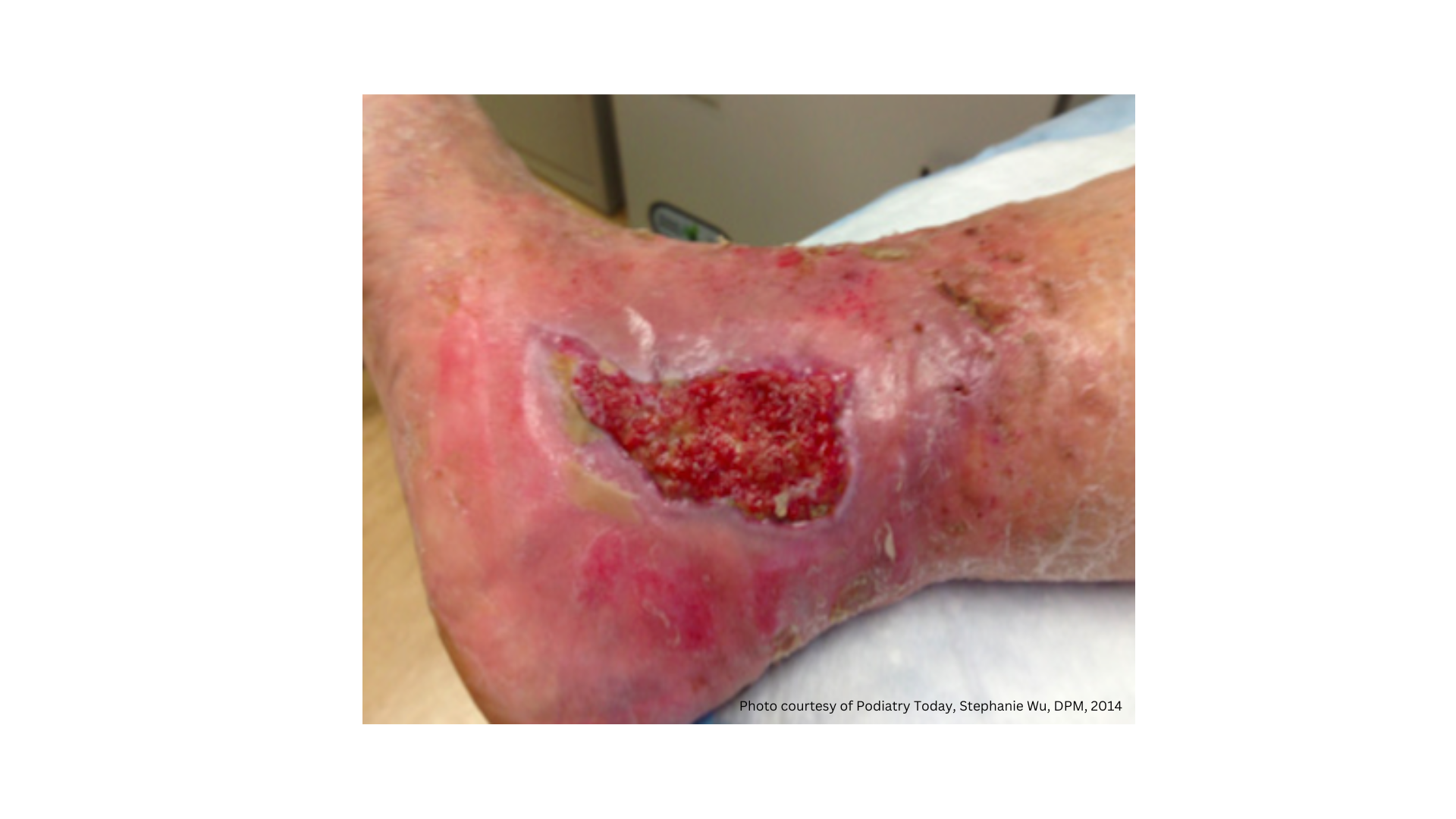A Wound Care Carnival: Making Pressure Injury Prevention and Wound Care Fun
February 7, 2020
Education is key in sustained positive outcomes and it is the first step in understanding pressure injury prevention, for both patients and staff. It's very difficult to hold people accountable for something that they did not know. Therefore, prevention starts with education.
For education to be impactful, it should also be fun. Interactive games, small prizes or candy, and engaged and energetic educators are key to fostering an environment where people will remember what they are taught. The teach-back method and continued follow-up and reinforcement are also essential elements of a successful education plan. Every November, we celebrate World Wide Pressure Injury Prevention Day by promoting awareness of pressure injuries and how to prevent them. The National Pressure Injury Advisory Panel (NPIAP) brings awareness to pressure injuries by promoting this day, along with providing many educational resources on their website.
We discuss factors in pressure injury development, treatment options, and strategies for prevention. Nutrition, nursing, therapies, plastic surgery, nursing education, leadership, general surgery, bedside caregivers, and other specialty services are all key players in prevention and treatment of pressure injuries. What better way to highlight pressure injury prevention and treatment strategies than by bringing these specialties together for an education carnival!
Tools to Maximize Turning and Repositioning Programs for Pressure Injury Prevention
Building a Pressure Injury Prevention Carnival
Now that you have a little background on World Wide Pressure Injury Prevention Day and the importance of education, let's move on to the fun stuff. Imagine you're walking outside on a sunny day. You hear laughter, music, and the sounds of popcorn popping, balloons being broken, and people having fun. The smell of popcorn and cotton candy fills the air. There are carnival games, prizes, and people enjoying themselves all around you. You're officially at our wound care carnival! You look around at the different stations and see:
- Nutrition: Dietitians and dietetic interns are presenting information on nutrition and wound healing, how the two relate, and how proper nutrition can promote healing and prevent pressure injuries. There are samples of different supplements – if you're a patient this is interesting because you've probably never tasted all of them. If you're a nurse, this is important because you want to be able to educate your patients on the tastes, textures, and nutritional values of the different supplements. There are handouts, food demonstrations, and recipe cards for high-protein options. There are people to answer any questions you may have and provide additional information on nutrition and wound healing.
- "Guess Your Weight": A nurse stands in front of this station and has a handout with a creative game. Often, when we are weighed in the hospital, we don't think about the environment and how much different objects weigh. There is a game here that has us guess the weights of different objects by matching numbers with the object named. Some of the objects that may impact obtaining an accurate weight are prosthetic limbs, shoes, pillows, blankets, wheelchairs, wheelchair cushions, oxygen tanks (empty and full), and the amount and types of clothing the patient is wearing. When a patient has a weight variation, it is important to investigate and treat the cause... which sometimes may be as simple as removing one of the items listed above!
- Temperature and wound healing: This station is important because we often don't realize how much temperature impacts healing and how long it takes for a wound to regain normal body temperature for healing to resume after the dressing is removed and the wound is cleansed. The frequency of dressing changes, types of products used, and techniques for dressing changes are discussed here. Discussion questions are incorporated into the presentation to be sure that the learner understands the information. How long do you think it takes for a wound to return to 98.6°F? How does the frequency of dressing changes come into play here?
- Performance improvement (PI) measures and data: PI measures directly relate to a lot of things nursing focused. It is important for all caregivers to understand the specific PI measures for their hospital and how we meet these measures. It is key that all caregivers are aware of current PI data and how they can maintain or improve these data in certain areas. There is a clown car ball toss here: answer a question correctly and earn a toss into the clown car. Candy awaits you!
- Not Another Wound Acronym! (NAWA): This game is presented in a wheel format and is very colorful and creative. Definitely an eye-catcher! The wheel is spun and lands on a wound acronym, for example, MARSI, MASD, IAD, HAPI, MDRPI, DTI, and more. Wound acronyms are all around us both in literature and in charting. Understanding wound acronyms helps nurses to better understand charting and the entire treatment plan. Medical jargon can be overwhelming at times, and sometimes we really think, "not another wound acronym!" This game really engages learners with some very pertinent information!
- Nail Tarot cards: Come see the fortune teller and the crystal ball. This station looks just like the fortune teller tent at the local carnival. Your "nail fortune" will be told based on your Tarot cards. Each card contains a description of a nail condition on one side and some causes for this condition on the opposite side. There are also pictures to correlate with written information. Some examples of the Tarot cards include:
- Clubbing or rounded nails – possible low blood oxygen levels related to an underlying medical condition
- Yellow nails – possible fungal condition or underlying medical condition
- Rippled nails – possible vitamin or mineral deficiency or other medical condition
- Wound etiology and treatment: To treat a wound most effectively, we must understand the etiology. For example, pressure injuries are often treated differently from vascular wounds. The underlying cause of the wound must be managed for healing to occur. This station incorporates questions and a wheel game to engage learners. A lot of factual and very important information is presented here in a creative way that keeps learners engaged.
- Incorporating candy corn into staging pressure injuries: Candy corn has layers, and so do pressure injuries. The level of tissue damage determines the stage of the wound. Candy corn can be used to illustrate staging a pressure injury as the layers of the candy are exposed or "peeled away." And what better way to do this than with a giant candy corn model?! Plus, depending on whom you ask, candy corn is also pretty delicious to eat, and samples surround you.
Conclusion
For education to be meaningful, it should be interactive and fun and should incorporate different modalities for teaching, along with the teach-back method, which ensures that the learner understands the material. Additionally, education should be ongoing and sustainable to maintain positive outcomes and keep up with evidenced-based trends in pressure injury prevention! Engage your staff and nursing leaders to create interactive presentations on pressure injury prevention and treatment while making wound care fun!
About the Author
Holly is a board-certified gerontological nurse and advanced practice wound, ostomy, and continence nurse coordinator at The Department of Veterans Affairs Medical Center in Cleveland, Ohio. She has a passion for education, teaching, and our veterans. Holly has been practicing in WOC nursing for approximately six years. She has much experience with the long-term care population and chronic wounds as well as pressure injuries, diabetic ulcers, venous and arterial wounds, surgical wounds, radiation dermatitis, and wounds requiring advanced wound therapy for healing. Holly enjoys teaching new nurses about wound care and, most importantly, pressure injury prevention. She enjoys working with each patient to come up with an individualized plan of care based on their needs and overall medical situation. She values the importance of taking an interprofessional approach with wound care and prevention overall, and involves each member of the health care team as much as possible. She also values the significance of the support of leadership within her facility and the overall impact of great teamwork for positive outcomes.
The views and opinions expressed in this content are solely those of the contributor, and do not represent the views of WoundSource, HMP Global, its affiliates, or subsidiary companies.











